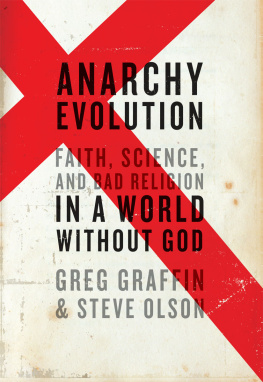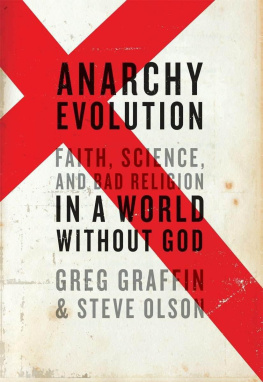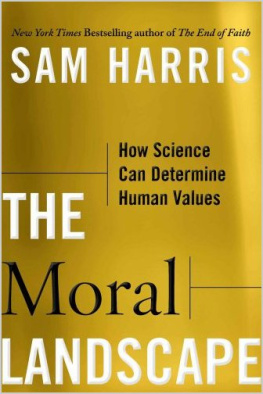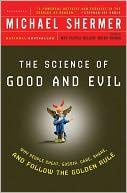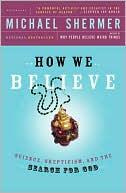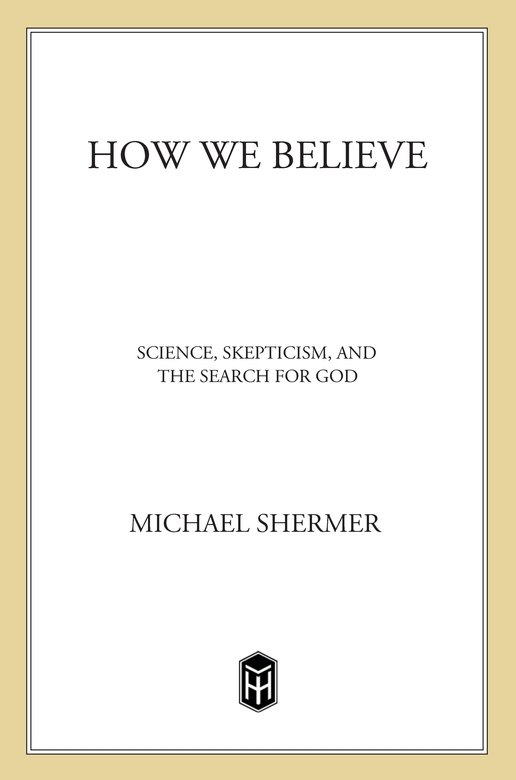What Does It Mean to Study Religion Scientifically? Or, How Social Scientists Do Science
Chapter 4, Why People Believe in God, involves a considerable amount of statistical analysis, so what follows is a brief explanation of what it means to study religion scientifically, and how social scientists do science. Human behavior, including religious behavior, is so complex that we must use statistics and probabilities to understand cause-and-effect relationships. Because humans are pattern-seeking animals, we cannot rely on intuitive guesses, as this might result in a scholarly version of seek and ye shall findwe may end up discovering what we are looking for in the data.
A good example of this can be seen in the powerful influence of Karl Marxs theory that social class is the most powerful force in human thought and behavior. For the past century historians intuitively interpreted historical events in this light. Starting with the assumption that social class dominates history, it is very easy to seek and find historical examples of it. In a 1992 biography of Charles Darwin by social historians Adrian Desmond and James Moore, for example, the authors struggled mightily to find evidence to prove their hypothesis that the Darwinian Revolution was class driven, with the upper class in opposition and the lower class in support. The biggest problem for the authors, of course, was that Darwin himself, from womb to tomb, was solidly embedded in the monied aristocracy of nineteenth-century England, thus their books subtitle is The Life of a Tormented Evolutionist (tormented by the anxiety produced in leading this lower-class revolution). It was not until social scientists began to test this hypothesis that it became clear that socioeconomic statusSES, as it is calledis only one of many variables influencing human action, and more often than not it is a minor variable. In his 1996 book, Born to Rebel, for example, Frank Sulloway showedcontrary to what historians have believed for over a centurythat proponents and opponents in the Darwinian Revolution, as well as the Copernican Revolution, the Protestant Reformation, the French Revolution, the civil rights movement, and many others, were not divided by social class. Whether someone was upper class, middle class, or lower class had little to no influence on his or her thinking. But anecdotes and narrative writingthe tools of the historianwill not reveal this because there is no mechanism to tell you if you are not simply seeking and finding anecdotes and quotes to support your hypothesis. The only way to know what is really going on is to conduct a formal test to find out which variables are significant and which are not.
One of the most common statistics used by social scientists is the correlation coefficient , represented by r, which has a range from .00 to 1.0from no relationship to a perfect relationship. The relationship of height and weight, for example, shows a high correlation whereas, say, height and I.Q. shows a low correlation. A negative correlation, signified by a minus sign in front of the value of r, represents associated values in opposite directions, as in golf skill and golf scoresas the first goes up, the second goes down. In the social sciences most correlations fall in the .00 to .50 range. The correlation of religious interests between identical twins raised apart, for example, is r = .49, a very significant figure that indicates a strong genetic component to religiosityfully half of the variation between people on their religious interests can be accounted for by their genes. [ Note : Normally psychologists square the r to obtain the percentage of variance explained by genetic factors (e.g., an r of .71 generates an r 2 of .50, or 50 percent of the variance accounted for), but in the case with twins this is not necessary because, as Arthur Jensen explained: Most psychologists have learned to treat correlations as the square root of variance explained. But it is incorrect to take the square of twins or other kinship correlations to determine the proportion of variance attributable to genetic or environmental effects. The unsquared correlation itself is correctly interpreted as a proportion.]
The study reported in Chapter 4 was conducted by MIT social scientist Frank Sulloway and me. We employed a multiple regression analysis of our religiosity data, which is a statistical tool employed when more than one variable is a significant predictor of another. For example, we found that education negatively correlates with religiosityas education goes up, religiosity goes down. But we also discovered that age and parental conflict are associated with a decrease in religiosity, while gender, parents religiosity, and being raised to be religious, are all associated with an increase in religiosity. Since there are multiple causes of religiosity, we are obliged to conduct a multiple regression analysis to tease apart how these numerous variables operate separately and together.
The p value represents the probability that a given correlation could result by chance. A correlation is considered statistically significant if there is only a probability of 1 in 20 (or p < .05), of its being due to chance. A p value of .01 means that there is only 1 chance in 100 that the correlation happened by chance. A p of .001 is 1 in 1,000, and a p of .0001 means the likelihood of the correlation being due to chance is 1 in 10,000. Most of the correlations we found in our study were significant at the p < .0001 level or better. We report our sample size represented by N . Although our total sample size was 2,707, the N will vary from statistic to statistic, since not everyone answered every question on the survey. In general, our sample size was larger than most encountered in social science research (many of which rely on introductory psychology courses for their subject pools), especially in religious surveys. For example, Kenneth Pargament, in his comprehensive 1997 The Psychology of Religion and Coping, provides an extensive appendix listing 261 studies, including their sample sizes. The average N was 324.
Finally, to relate all this to a practical matter of concern to us all, Sulloway has shown that even seemingly small correlations of, say, .10, are equivalent to improving your chances of surviving a potentially fatal disease, assuming that you take an effective medication, from 45 percent to 55 percent. This improvement represents an increase in survival of 22 percent over the base rate (55/45 = 1.22). Sulloways point is that if our lives were threatened by a deadly disease, most of us would gladly take a drug that would give us a 22 percent probability of improvement. A correlation of .30 represents a near doubling of survival probability from 35 percent to 65 percent, while a correlation of .50 is equivalent to a tripling of the probability of survival, from 25 percent to 75 percent. In this manner, small correlations often represent real and powerful effects. In other words, significant correlations matter, even if they appear small.
In the scientific study of religionmainly involving three fields of the psychology of religion, the sociology of religion, and, to a lesser degree, the anthropology of religioncorrelations, multiple regressions, and probabilities are the tools wielded by social scientists who want to better understand the nature of Homo religiosus. Strangely, however, these fields are almost wholly neglected by social scientists studying psychology, sociology, and anthropology in generalstrange, considering how deeply important and vastly universal is the religious impulse. You will find only a couple of textbooks in these areas, and rarer still is the college course covering the scientific study ofreligion (with the possible exception of some seminaries and theological departments). I attribute this paradoxical dearth to the hands-off nature of religion in generalreligion is something to be followed, God is someone to be worshipped. To focus the narrow and intense beam of scientific light into this often dark and murky corner of the human condition can be blinding at first. As I have discovered in conducting this empirical study, to most folks there is something mildly unsettling about being asked personal and penetrating questions about their most deeply held and cherished religious beliefs. Still, if you want to understand the human condition the study of religious belief cannot be neglected, and since science is the best method yet devised for uncovering cause-and-effect relationships, we must apply that method whenever and wherever possible.




